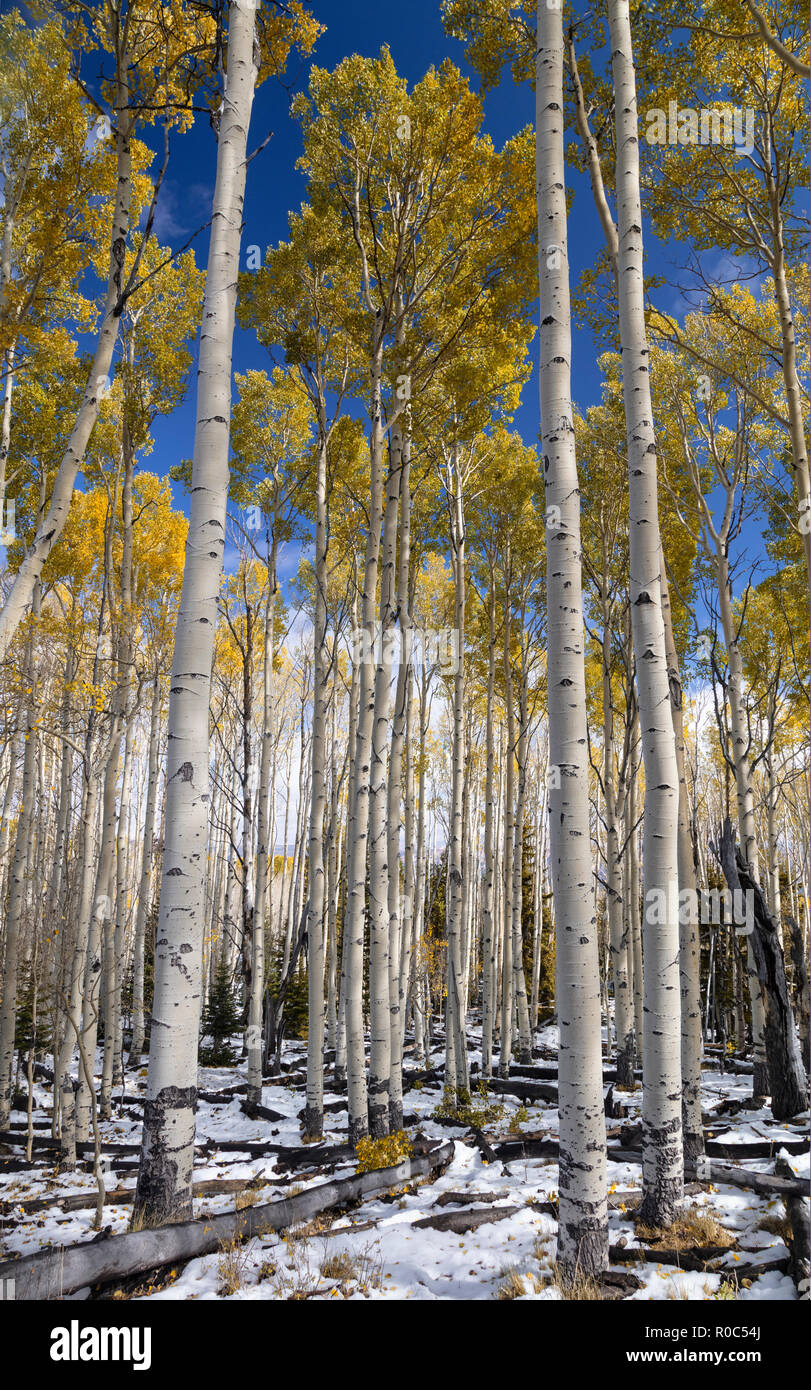Changing Aspen - Southern Utah Mountains

Image details
Contributor:
Phil Degginger / Alamy Stock PhotoImage ID:
R0C54JFile size:
134.8 MB (10.8 MB Compressed download)Releases:
Model - no | Property - noDo I need a release?Dimensions:
5423 x 8688 px | 45.9 x 73.6 cm | 18.1 x 29 inches | 300dpiDate taken:
12 October 2018More information:
Aspens typically grow in environments that are otherwise dominated by coniferous tree species, and which are often lacking other large deciduous tree species. Aspens have evolved several adaptations that aid their survival in such environments. One is the flattened leaf petiole, which reduces aerodynamic drag during high winds and decreases the likelihood of trunk or branch damage. Dropping leaves in the winter (like most but not all other deciduous plants) also helps to prevent damage from heavy winter snow. Additionally, the bark is photosynthetic, meaning that growth is still possible after the leaves have been dropped. The bark also contains lenticels that serve as pores for gas exchange (similar to the stomata on leaves). Aspens are also aided by the rhizomatic nature of their root systems. Most aspens grow in large clonal colonies, derived from a single seedling, and spread by means of root suckers; new stems in the colony may appear at up to 30–40 m (100–130 ft) from the parent tree.